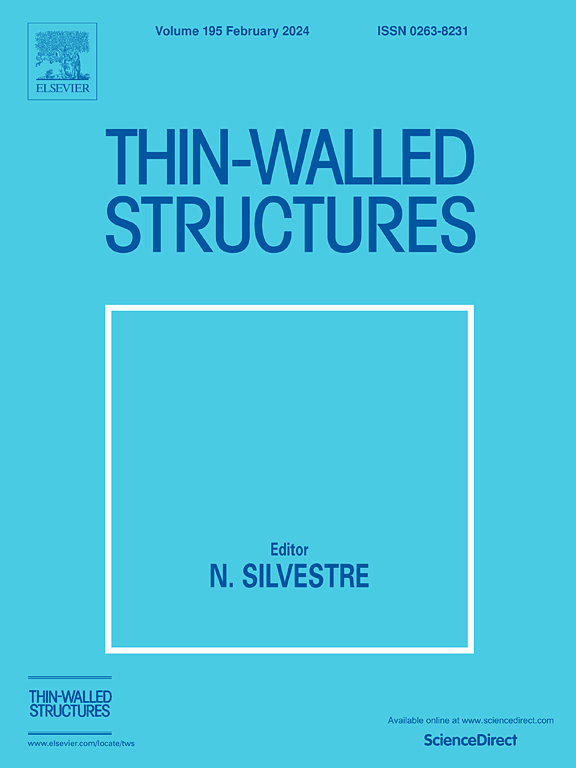Close-range blast behavior of hybrid FRP-concrete-steel double-skin tubular member
IF 5.7
1区 工程技术
Q1 ENGINEERING, CIVIL
引用次数: 0
Abstract
This research experimentally and numerically investigates the dynamic response of hybrid fiber reinforced polymer (FRP)-concrete-steel double-skin tubular member (DSTM) under close-range blast load. Three DSTMs, 2500 mm in length and 200 mm in diameter, were designed and tested under close-range blast load at a scaled distance of 0.251 m/kg1/3. The blast pressure-time histories, damage modes and deflection characteristics of blasted DSTMs were acquired and analyzed. The test results demonstrate that the DSTMs exhibit highly localized damage mode (FRP tube ruptures and concrete fragmentations) under close-range blast load. Partial concrete filling into steel tube and adding steel ribs can both improve the blast resistant capacity of DSTM, with the effect of steel ribs more pronounced. Afterwards, refined numerical models were established, and the models’ accuracies were validated using the current test data. The validated models were used to reveal the blast resistant mechanism of DSTM, including the damage evolution, energy absorption mechanism, and confinement/protective effect from FRP tube. Furthermore, parametric analyses were conducted to study the effects of blast scaled distance, void ratio, and steel rib configurations on the close-range blast behavior of DSTM.
求助全文
约1分钟内获得全文
求助全文
来源期刊

Thin-Walled Structures
工程技术-工程:土木
CiteScore
9.60
自引率
20.30%
发文量
801
审稿时长
66 days
期刊介绍:
Thin-walled structures comprises an important and growing proportion of engineering construction with areas of application becoming increasingly diverse, ranging from aircraft, bridges, ships and oil rigs to storage vessels, industrial buildings and warehouses.
Many factors, including cost and weight economy, new materials and processes and the growth of powerful methods of analysis have contributed to this growth, and led to the need for a journal which concentrates specifically on structures in which problems arise due to the thinness of the walls. This field includes cold– formed sections, plate and shell structures, reinforced plastics structures and aluminium structures, and is of importance in many branches of engineering.
The primary criterion for consideration of papers in Thin–Walled Structures is that they must be concerned with thin–walled structures or the basic problems inherent in thin–walled structures. Provided this criterion is satisfied no restriction is placed on the type of construction, material or field of application. Papers on theory, experiment, design, etc., are published and it is expected that many papers will contain aspects of all three.
 求助内容:
求助内容: 应助结果提醒方式:
应助结果提醒方式:


